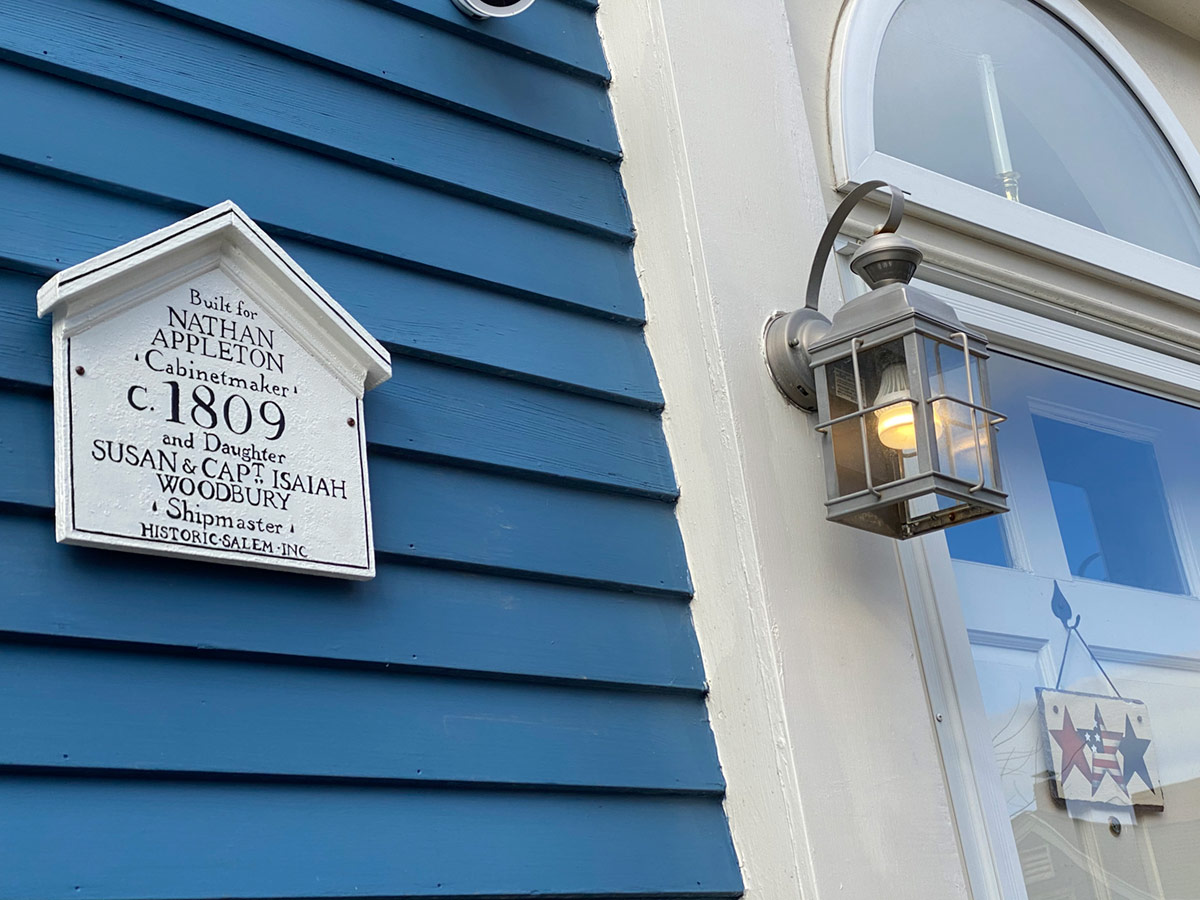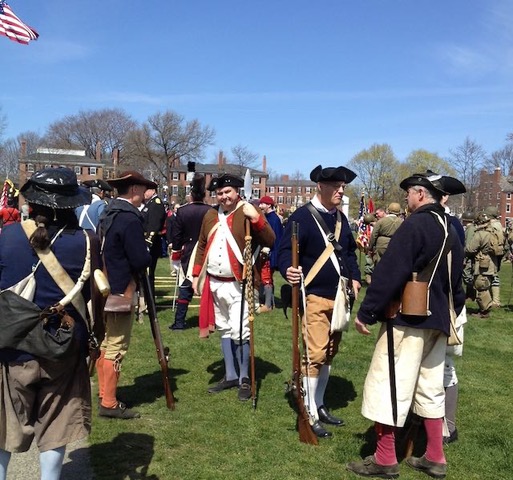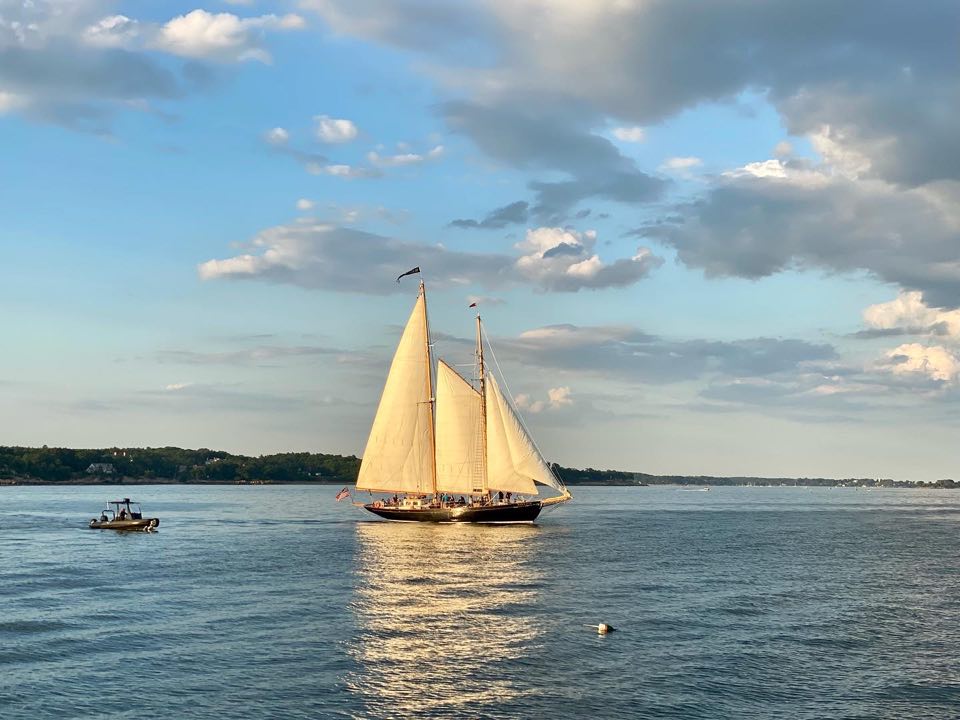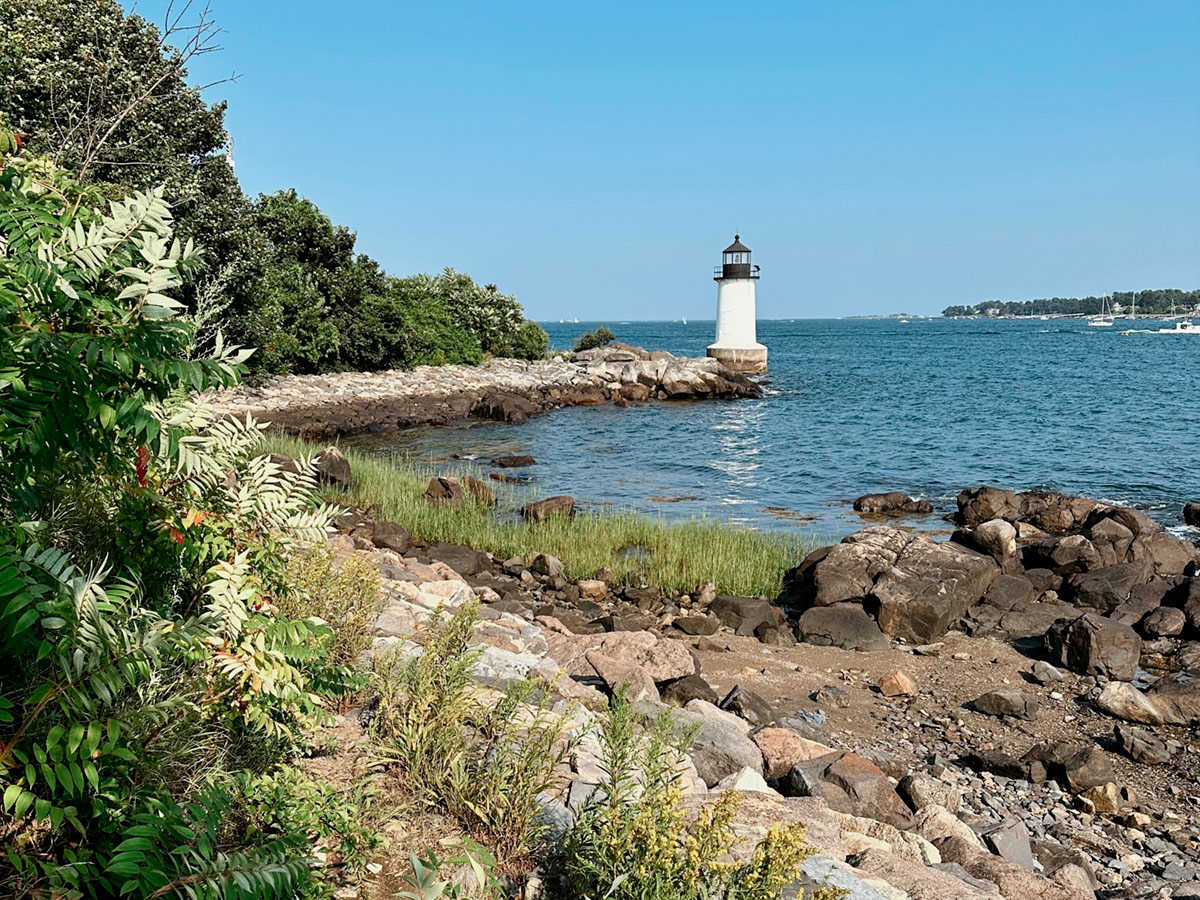History
Nathaniel Appleton Jr.
30 Northey Street is an 1809 Federal Style home that was built for Nathaniel Appleton Jr. (1782-1859), one of Salem’s leading cabinet-makers at a time when Salem was famous for the quality of its furniture. Nathaniel Appleton Jr. specialized in the Sheraton style of furniture. Some of his works are museum quality pieces such as the small antique coffee table in our living room which is an example of a Sheraton style.
Nathaniel Appleton Jr. purchased the land from Merchant Abijah Northey for $748.14. Nathaniel & his wife Susanna Foster Appleton built the main house to its present appearance soon after the purchase in 1809. A survey of the house (second and third floor rooms and cellar) leads to the conclusion that it was built all of a piece rather than piecing buildings together as was popular at that time. The underpinning is original with large hewn posts, beams and joists, and two arched brick chimney foundations. Main house has a granite foundation on fieldstones. The trim and features (frames, chimney-pieces, winder staircase, etc.) all date from the “Federal” period, consistent with a date of 1809, as is the general plan and form, being a three-story hip-roof house, five bays by two according to research conducted by Historic Salem, Inc.
In 1825, Mr. Appleton expanded his homestead and set up his cabinet-making shop in the lot adjoining the back which ran over to Lemon Street.
Marriage of Appleton Daughter & Captain Isaiah Woodbury
In 1832, Susan A. Appleton became the first of the three Appleton daughters to marry. Her husband was Captain Isaiah Woodbury, a Salem shipmaster who hailed from Boxford. They resided in Salem, here at this house and had two sons. Unlike most of his fellow shipmasters, Capt. Isaiah Woodbury remained a seafarer, and it proved his undoing: he died at sea in 1844, leaving his widow and two sons. They continued to reside here in the family home. The Captain’s room is also a nod to Captain Isaiah Woodbury.
Bridge Street Neck Historic District
This district is located within an area believed to be the first settlement of Europeans in Salem in 1626 and is one of the first colonies along the New England coast. Unfortunately, there are no known remains of the “Old Planter’s” (Roger Conant & his men) settlement of the 1620s and 1630s. Bridge Street was one of the earliest roads in Salem. According to the National Register of Historic Places, Naumkeag (the fishing hole) was renamed to Salem for “Shalom” or peace.








